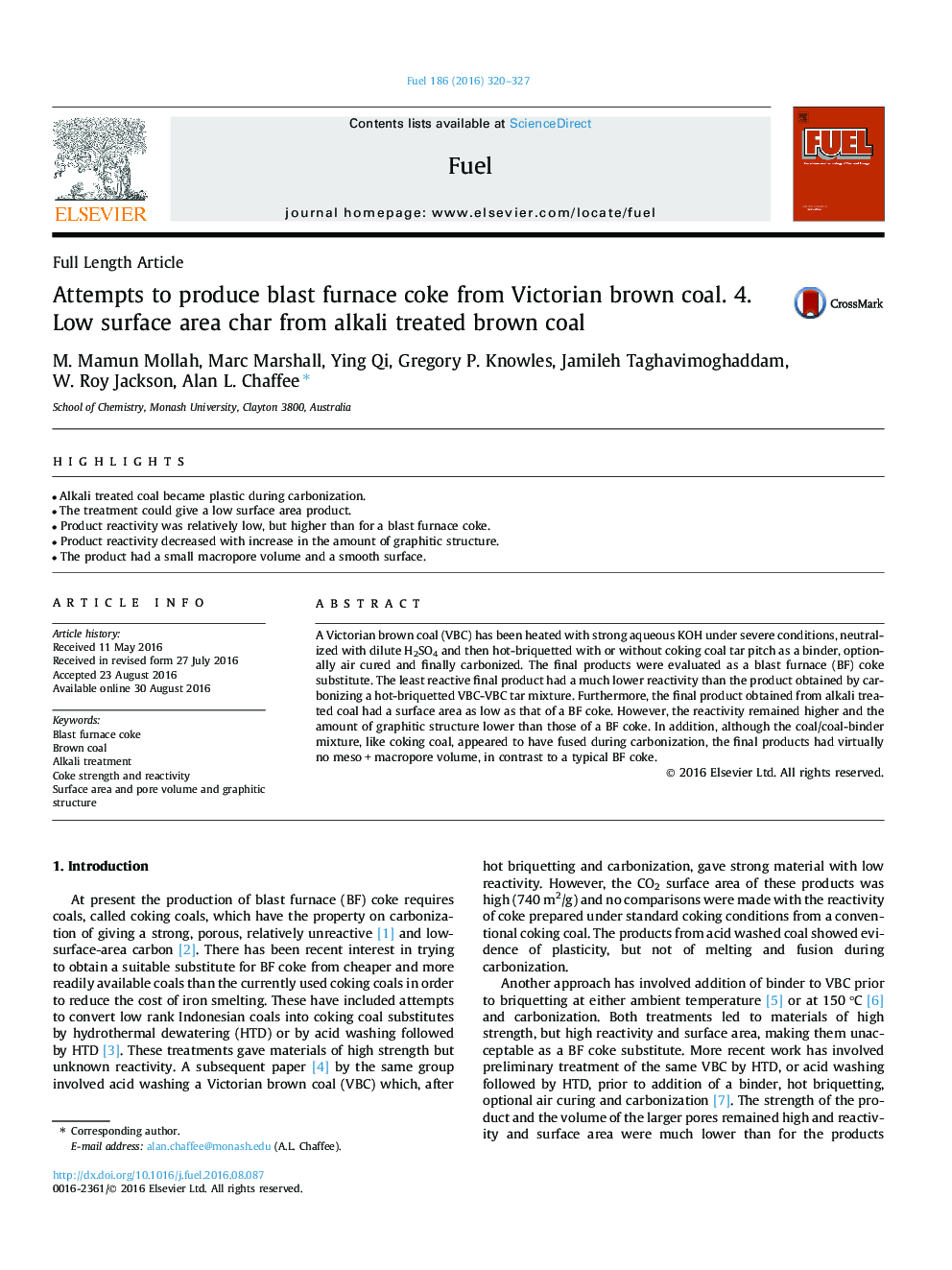| کد مقاله | کد نشریه | سال انتشار | مقاله انگلیسی | نسخه تمام متن |
|---|---|---|---|---|
| 6476075 | 1424978 | 2016 | 8 صفحه PDF | دانلود رایگان |
- Alkali treated coal became plastic during carbonization.
- The treatment could give a low surface area product.
- Product reactivity was relatively low, but higher than for a blast furnace coke.
- Product reactivity decreased with increase in the amount of graphitic structure.
- The product had a small macropore volume and a smooth surface.
A Victorian brown coal (VBC) has been heated with strong aqueous KOH under severe conditions, neutralized with dilute H2SO4 and then hot-briquetted with or without coking coal tar pitch as a binder, optionally air cured and finally carbonized. The final products were evaluated as a blast furnace (BF) coke substitute. The least reactive final product had a much lower reactivity than the product obtained by carbonizing a hot-briquetted VBC-VBC tar mixture. Furthermore, the final product obtained from alkali treated coal had a surface area as low as that of a BF coke. However, the reactivity remained higher and the amount of graphitic structure lower than those of a BF coke. In addition, although the coal/coal-binder mixture, like coking coal, appeared to have fused during carbonization, the final products had virtually no meso + macropore volume, in contrast to a typical BF coke.
Journal: Fuel - Volume 186, 15 December 2016, Pages 320-327
